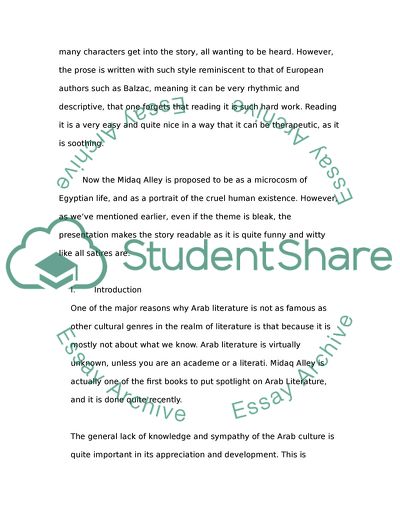Midaq Alley by Mahfouz: A Microcosm of Egypt and the Human Existence Book Report/Review Example | Topics and Well Written Essays - 1500 words. https://studentshare.org/literature/1796556-arabic-world-society-and-cinema-midterm
Midaq Alley by Mahfouz: A Microcosm of Egypt and the Human Existence Book Report/Review Example | Topics and Well Written Essays - 1500 Words. https://studentshare.org/literature/1796556-arabic-world-society-and-cinema-midterm.


